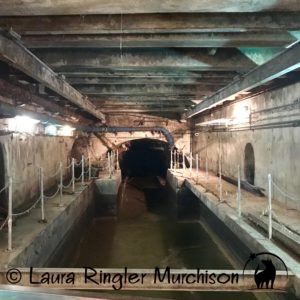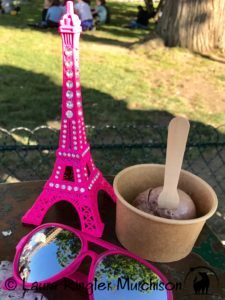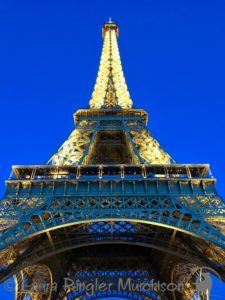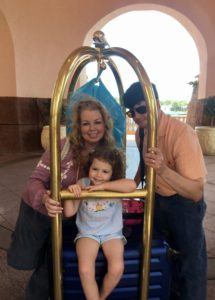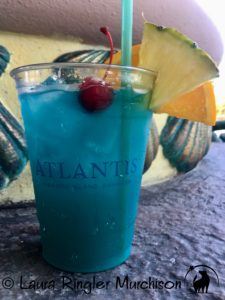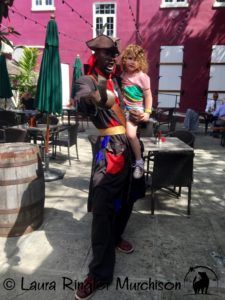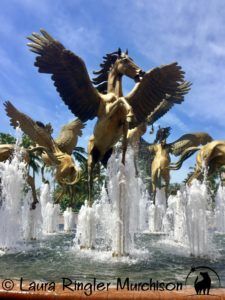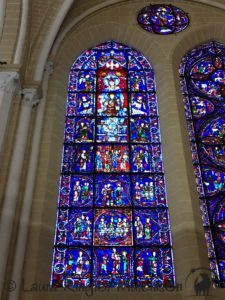
I was eleven when I wrote my first book, which was on Christian Symbols. It was not mass produced, but I was one of the very few in the state of Texas to become published at that age. I have always loved church and I have many happy memories of attending each week with my parents. My mother said when I was an infant she would turn me toward the huge quatrefoil stained glass windows in our old Methodist church, which is now an historic landmark, and I would stare at them through the entire service. Embedded in my mind from that time are two distinct images: one of Christ praying in the Garden of Gethsemane the night before He was crucified, and another of Christ knocking at the door (which I believe represents the entry to our hearts.) I have always loved Christian iconography in particular and have enjoyed learning the Latin behind some of the Church’s oldest symbols. So, despite the fact that I am not Catholic, I absolutely treasure any time I enter an old church. (For the record, I am Episcopalian, or “Whiskeypalian,” as I often like to joke. In the United States and Canada “Episcopal” is a term used for the Anglican Church, or the Church of England.) On this day I requested a guide from someone well-versed in Christian symbology who could take our family of three along tours of two churches I had always wanted to visit. The first was Saint-Séverin, located in the Latin Quarter. It continues as an active place of worship and is one of the oldest churches along the Left Bank. Its bells include the oldest remaining in Paris, cast in 1412. Built during the 11th century, it was reconstructed two hundred years later to accommodate the ever-growing population. A 13th century Chapel of the Virgin Mary escaped later destruction and stands to the right of the vestry. The Gothic stained glass windows of the chancel are intact and apparently date from the 15th century. We visited early in the morning, and I felt right at home with all the the multi-cultural people and the vast array of bright colors … only no one looked upon us with smiles as we entered the church. Honestly I was hurt by the underlying hostility we perceived amidst one of the oldest churches in Paris. I would have loved to shop in the tents stationed in front of the church but we did not really seem welcome. It was as if it were a private section only for Muslim immigrants. The Juxtaposition was not lost on me and I left feeling saddened. Next, we would journey to Chartres, a city in north-central France, southwest of Paris, known for its massive Cathédrale Notre-Dame; a Gothic cathedral completed in 1220 featuring two towering spires. It contains flying buttresses, Romanesque scuptures, a pavement labyrinth, and elaborate rose windows. However it is the interior’s blue-tinted stained glass which makes it distinctive. Situated atop the center of the town high upon a hill, we found ourselves looking up in awe at the massive cathedral. I can only imagine what it must have inspired in centuries past. Our guide even managed to engage our five-year-old, and I was so thankful for his kindness. She had been sort of overlooked in all this and he knelt, turning all his attention upon her, asking what SHE thought and pointing out various things he believed might hold her interest — never once talking down to her. This was a special day for me, and I was grateful to both our Muslim driver and our Christian docent. The American journalist Diane Sawyer said, “Follow what you are genuinely passionate about and let that guide you to your destination.” On this day I knew I had followed my passion, and I fervently hoped my husband and child could feel what I felt … a destination with the divine.

